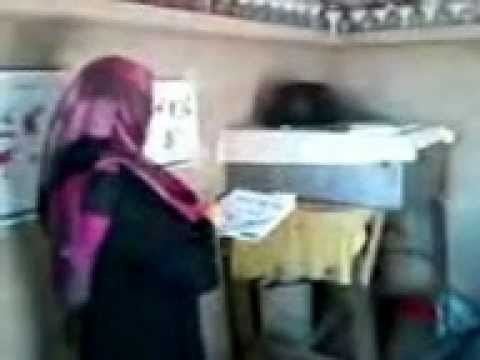District Hyderabad District | ||
 | ||
Tehsil Hyderabad Taluka (rural) | ||
Travel sindh a hunting house muliyakatiar by shahzor nizamani tando qaiser 2
Tando Qaiser is a town in Hyderabad District, Pakistan. It is named after late 18th-century leader of Nizamani tribe in Sindh Qaiser Khan Nizamani who founded the village after his son Gulham Ali Nizamani died there whilst Qaiser, his younger brother Aloda and their retinue were moving north to their original home of Dera Ghazi Khan in Southern Punjab. Tando means fortified settlement and indicates original settlement founded by Qaiser was a militarily fortified settlement.
Contents
- Travel sindh a hunting house muliyakatiar by shahzor nizamani tando qaiser 2
- Map of Tando Qaiser Pakistan
- History
- Education
- Distribution of population
- Economy
- References
Map of Tando Qaiser, Pakistan
History
Qaiser Khan was a great-grandson of Nizamuddin Rind (also known as Nizam Sakhi) of Dera Ghazi Khan. Nizam Sakhi is buried in a tomb in Choti Nawab, Dera Ghazi Khan. He was a Qaiserani Rind Baluch and Nizamani is a Rind sub-tribe which is now spread over Southern Punjab and Sindh. Qaiser entered Sindh sometime around A.D. 1750 with his regiment to join the army of the then Kalhora kings of Sindh at the invitation of the Talpur tribe who were already serving the Kalhora dynasty. At the time, the Talpurs formed the major part and commanded the Kalhora army. Subsequently, around A.D. 1780, the Talpur chief Fateh Ali overthrew the Kalhora kings with the support of Qaiser and the Nizamani contingent of the army as well as the support of other Baloch chieftains.
However, the alliance with the Fateh Ali did not last long and for various reasons Qaiser fell out with the Talpur chief and, therefore, decided to go back to Dera Ghazi Khan. On the way back, his son Ghulam Ali fell ill and died close to the current town of Tando Qaiser around A.D. 1790. Qaiser, then well in his 70s, was extremely saddened by the demise of his beloved son and decided to go no further and settle near to where he buried his son. Qaiser's sorrow is carved in Persian words on Ghulam Ali's grave which roughly translate as "I stand sorrowful at the death of my son". Qaiser fortified his settlement, which subsequently grew and became famous as Tando Qaiser.
At about the time of the invasion of Sindh by the British East India Company in A.D. 1843 which led to the battles of Miani and Dabo, Tando Qaiser was a thriving town led by Qaiser's great grandsons Ghulam Ali and Ghulam Hussain. Ghulam Ali was martyred whilst Ghulam Hussain was seriously wounded at the Battle of Miani where both fought against the army of the East India Company under the command of General Charles Napier. Many other men from Tando Qaiser were also martyred or wounded at Miani and Dabo. Thereafter the British occupied Sindh and the supremacy of the Baluch tribes in Sindh came to an end. The British gave favours to those who gave allegiance to them and awarded titles such as 'Sir' and 'Nawab' as well as grants of lands. In particular, the Hindu community greatly benefited and grew in wealth and prominence. The Sindhi community also benefited. The Hindu Thakurs of Tando Qaiser became highly successful in business, trade, and industry. Mango produced in Tando Qaiser were sold in the markets of Mumbai (formerly Bombay) by the Thakurs. They also established a cotton factory in Tando Qaiser in the early part of the 20th century but due to the independence of Pakistan in 1947, they left Tando Qaiser and their established cotton factory was sold to Haji Wahi Dino Pahore. With that, industrialisation ended in Tando Qaiser.
Education
The opening of Agriculture College, and then Sindh Agriculture University in Tando Jam, left a great impact on the social set-up of Tando Qaiser. A large number of youths from Tando Qaiser graduated from that university. Although most of them are Nizamani and Khaskheli, other communities, like Qaboolani youths graduated from that Agriculture University.
The literacy rate in Tando Qaiser is high.There are a large number of graduates in different areas, including agriculture, medical, engineering, business administration, information technology and education.
Distribution of population
Tando Qaiser has a population in excess of 25,000. Consequently, the town is split into several neighborhoods (Paro), named after the people living in that vicinity. These neighborhoods include:
Nowadays, people from Tando Qaiser are living in different parts of Pakistan. Some of them are also living abroad, including Middle East, Far East Asia, Europe, Australia, Canada, United States.
Economy
The economy of Tando Qaiser is mainly based on agriculture. The town is surrounded by lush green orchards of Mango, Guava, and Jujube (Ziziphus mauritiana). Mangoes, guava and Jujube of Tando Qaiser are very famous. They are not only sold around the country, but also exported to other countries. A large number of people are involved in the production, harvest, and marketing of these fruits.
Local businesses and trade services form a major component of the growth of the communal economy. Concurrently, such business schemes further serve as viable sources of income for residents. Notably, the renowned Tando Qaiser 'bazaar' forms an integral aspect of income generated from business in the locality.
